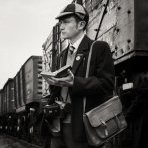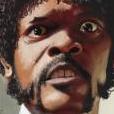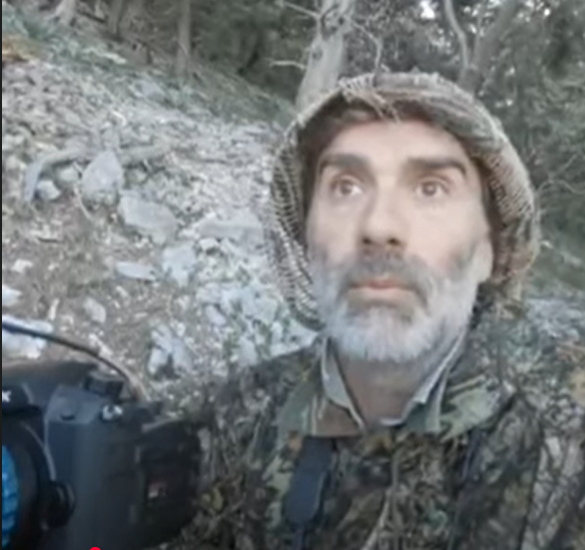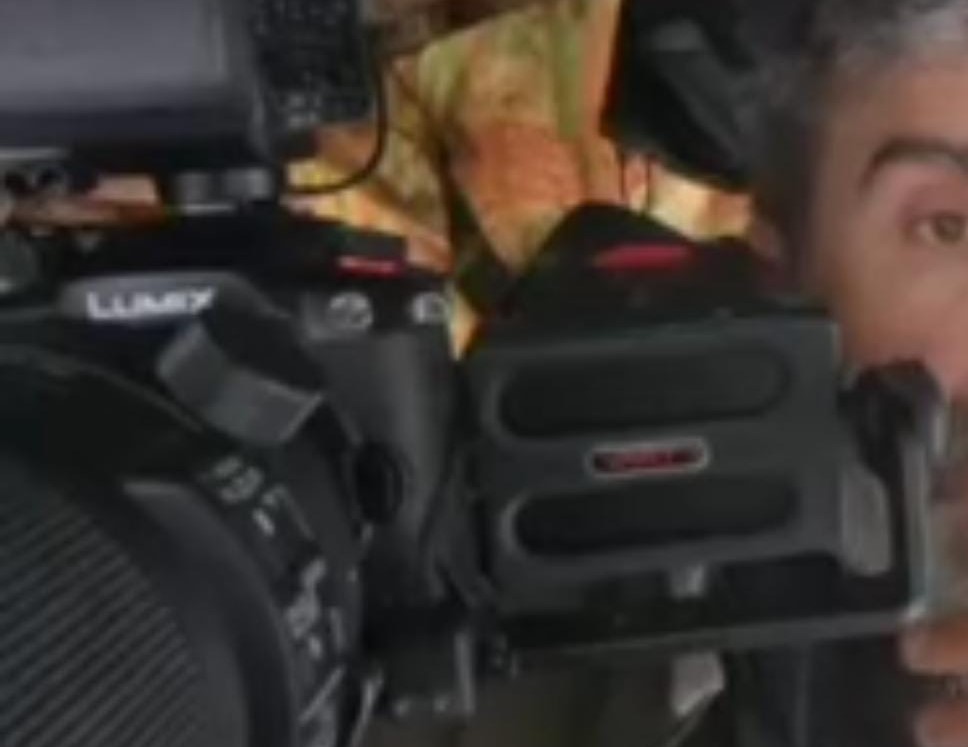All Activity
- Past hour
-
There are better mirrorless video cameras for sure. I’d pick my S5ii’s without thinking about it. There are better hybrids; S1Rii, Z6iii, Z8, R5ii come to mind. But for stills, other than the Leica SL3 which beats it for design, build and badge, this side of medium format, I don’t think there is a better camera available today and at used prices… It’s hardly lacking in the video department and can shoot 8k but video is not its real strength. With a single prime or a small set (such as the Sigma contemporary line) in a small bag or a single or set of compact zoom lenses such as the Tamron’s, or even a lens such as Sony’s own 24-50 f2.8, it’s a bonkers good piece of kit. Compact but chunky, well built and with the best rear LCD in the business, for me and my needs, it’s that no-brainer they talk about. For most of this forum, maybe not. For the same money, I’d take the SL3 over it and maybe still if I could find one (doesn’t exist) at £3000, but beyond that, nope. I’ve flirted with the notion of medium format but Fuji does not have the lenses and Hasselblad is so far beyond my means, it might as well be one of those cameras on the moon. I’ve had quite a few Sony cameras over the years and admired a few, but none of them quite hit the spot. The A7RV is the first to do so and it’s only real fault for me is it doesn’t have a Lumix badge on it. (I like stuff to match).
-
 jbCinC_12 reacted to a post in a topic:
New US camera import tariffs - 25-50%
jbCinC_12 reacted to a post in a topic:
New US camera import tariffs - 25-50%
- Today
-
Reviving the topic Most people talk about DR only as a camera parameter but you quite correctly understand it as a process Here is my answer: In short most of the time limiting part is the display (smartphone, computer, etc.) / theatrical screen or other media. Plus the color space in which we export. Camera DR is just one part of the puzzle. We have DR of: 1. The scene we are photographing or shooting in video. 2. The camera or recording device. 3. The medium that displays the recording being photographic paper or computer display or thearical screen or smartphone display. For point 1: A lot of times the scene has itself limited- dynamic range - 3-4-5 stops. For point 3: DR is related to the light intensity / brightness of the display medium. Traditional theatrical screens have only 100 nits of brightness and as result only 5-6 stops of DR. Traditional computer screens 300-400 nits which give us 6 to 7 stops of DR. Only HDR LCD screens and theatrical screens with laser projectors can show HDR video or imagery where color space allows for a wider dynamic range and medium is capable to reproduce this DR. In HDR video we can see up to 10 stops of DR. Since REC709 color space was introduced to deal with SDR TV screens it is also limited to 6-7 stops of DR. If we watch REC 709 footage on a HDR LCD screen we are still limited to those 6-7 stops. In this case limitation comes from the color space in which video has been exported. That's why a camera with limited DR - only 8 for LUMIX GH1 can look perfectly OK. In case exported footage is in REC709 it will need only 6-7 stops of DR. Where do the rest of camera DR go if we export in limited 6-7 stops of DR ? They are compressed / mapped to those 6-7 stops of the exported footage. Few more details in the shadows or highlights or both. Higher camera DR gives us more LATITUDE. You will often see latitude test go together with tests of for DR. Fuji Velvia which I used extensively in the past and was the top film emulation for landscape photography had only 6 stops of DR and 1/2 stop of latitude. If your photo was 1 stop underexposed or overexposed it was practically ruined. You have to wonder how people were able to shoot such a film and appreciate the results 🙂 When we talk about film DR we should always specify which emulsion we are have in mind. Now what happens when you have a scene with large dynamic range - 12-13 or more stops but your camera and / or export color space are limited to 7 ? Or you want to export in HDR (10 stops) but camera has only 8 stops. Some of the stops will be lost and the result will be lost details in the shadows or highlights. As one Hollywood colorist put it: "Your highlights are blown up? Who cares !!!" We don't watch a video or photograph like a scanning device from top to bottom, pixed by pixel. We look to a part of the photograph or video which is important and draws our attention. This part needs 5 stops DR to be displayed correctly and not always. 2 more stops for shadows and this is still enough for the vast majority of what we shoot and display. A limited dynamic range of the camera is not a problem as far as the important part of the scene is exposed and lighted correctly. More stops of camera DR gives us more LATITUDE and comfort in post production. Camera dynamic range becomes more important if we intend to export in HDR. That's all. In general DR and all technical aspects of picture quality fall under one philosophical category which I forgot the name: When contradicting statement about something are both true (correct): For example in this case: DR is important and DR is not important. Both are true. In practical terms ask yourself how many times you've heard somebody exiting a movies theater say: "Nice movie but I wish the DR was more " 🙂 On the other hand if we ignore those technical aspects we still will be stuck in black and white film emulsions with 5 stops of DR. Here is a great video from an Austrian photographer which goes into details about DR. It is by far the best explanation and structured answer about DR I've seen. Well worth your time: https://www.youtube.com/watch?v=uYOr6t8llgc And this one too: https://www.youtube.com/watch?v=aWGIjXutyKU
- Yesterday
-
 ND64 reacted to a post in a topic:
Panasonic Lumix S1R Mark II coming soon
ND64 reacted to a post in a topic:
Panasonic Lumix S1R Mark II coming soon
-
 Andrew Reid reacted to a post in a topic:
New US camera import tariffs - 25-50%
Andrew Reid reacted to a post in a topic:
New US camera import tariffs - 25-50%
-
Nope and I returned it. Panasonic's reliability has long been a reason I use them. The reports of overheating made this camera DOA for me. Maybe they'll sort it out in the future and I'll pick up a used one.
-
-
 eatstoomuchjam reacted to a post in a topic:
Need to vent... MPB are a f-ing nightmare
eatstoomuchjam reacted to a post in a topic:
Need to vent... MPB are a f-ing nightmare
-
 eatstoomuchjam reacted to a post in a topic:
New US camera import tariffs - 25-50%
eatstoomuchjam reacted to a post in a topic:
New US camera import tariffs - 25-50%
-
Canon price increases on all products coming within 2 weeks. https://www.canonrumors.com/price-increases-coming-from-canon-usa/ This will have a ripple effect too, on second hand prices globally. It might finally be time to stop buying shit.
-
The going rate for an a7R V in mint condition used is currently £2500 which is quite tempting.
-
Did you open it yet?
-
Granted, hilarious as all the job losses and the rise of a fascist dictatorship in the West is, we must remind ourselves to buy local because it'll be local businesses that die first in all this buffoonery. For example, the niche smaller camera shops in America which import from Asia. Smaller Chinese manufacturers that make niche products like camera cages and rigs. And so on. It'll be good for the climate though won't it?
-
I can only assume MPB must have now seen this thread, because they have given me nothing but radio silence on all channels since a week ago. The CEO himself Matt Baker, has now ignored 3 emails after starting off all chipper. A Sony RX1R which was described as having a bit of dust on the sensor (easy to disassemble and clean, I have done it before with one), turned out to have a laser damaged sensor with a string of damaged pixels. So if you do purchase from MPB make sure you are luckier than I have been.
-
Biggest lessons I learned… Figure out the story you are trying to tell before shooting. How is the image helping you tell that story? Massage/manipulate the image before shooting… wear complimentary clothes, move things around… turn an image that would’ve been great with normal clothes and current setup to something more epic. Last one is controlling light. Yes. We all know to adjust shutter angle and iso in camera, we also know to bring a couple ND filters, pro mist filters… and even lights for late night shooting… but there is a thing and its really magical if you know (again about controlling light)… for example - the golden hour (specific hours in the day where the sun works with you instead of against you). Filming on rainy days….Throwing water on concrete (day or night) helps a lot, something to do with how much light is absorbed vs reflected. Adding smoke (smoke machine) or filming on foggy days (fog machine), it adds layers to the image but it also limits the light entering the camera.
-
Very interesting. I agree that Chinese and Korean reviewers are generally more unbiased and objective their reviews of home appliances and other gadgets, but have never seen their camera reviews. Are there any Chinese reviewers you recommend?
-
Some of the AI generated Trump stuff on IG is superb. We’re in for a golden age of stand-up comedy. Although how can you make the Trump joke any funnier?
-
-
 Marcio Kabke Pinheiro reacted to a post in a topic:
New US camera import tariffs - 25-50%
Marcio Kabke Pinheiro reacted to a post in a topic:
New US camera import tariffs - 25-50%
-
 Marcio Kabke Pinheiro reacted to a post in a topic:
New US camera import tariffs - 25-50%
Marcio Kabke Pinheiro reacted to a post in a topic:
New US camera import tariffs - 25-50%
-
 Andrew Reid reacted to a post in a topic:
New US camera import tariffs - 25-50%
Andrew Reid reacted to a post in a topic:
New US camera import tariffs - 25-50%
-
 Marcio Kabke Pinheiro reacted to a post in a topic:
New US camera import tariffs - 25-50%
Marcio Kabke Pinheiro reacted to a post in a topic:
New US camera import tariffs - 25-50%
-
 Marcio Kabke Pinheiro reacted to a post in a topic:
New US camera import tariffs - 25-50%
Marcio Kabke Pinheiro reacted to a post in a topic:
New US camera import tariffs - 25-50%
-
-
.
-
A sign of things to come for those outside the US. https://www.bbc.co.uk/news/articles/ce82391x2kyo Sony raising PS5 prices in double digit percentages. This is all to protect the ailing US market and... Just because they can. Because when there's an expectation all your rivals will have to raise prices as well due to a global force, and they all go up together that means they can get away with it as there's no cheaper competition keeping them in check. It's like a cartel, or a monopoly. Trump is the shit that just won't flush.
-
Did you happen to receive an A7S III with faulty bluetooth for just over a grand? And a Leica Q? Maybe it will turn up in about 3 months speaking french?!
-
New set of pre-order cancellations for the US. https://www.fujirumors.com/fujifilm-to-suspend-orders-for-gfx100rf-x100vi-and-x-m5-black-only/ Many more to come.
-
Davide DB started following [documentary] Linx by Laurent Geslin
-
Yesterday I watched on Sky TV the documentary Linx, a French-Swiss documentary released in January 2022, shot and directed by Laurent Geslin. It follows a lynx family in the Jura Mountains and reveals the hidden life of this elusive feline. https://mulderville.net/en/news/5009/lynx-interview-with-director-laurent-geslin Geslin is fascinated by all wildlife but was particularly drawn to the lynx due to its rarity and symbolism. Living near the Jura Mountains, he found it meaningful to focus on a local predator rather than traveling abroad. The lynx, reintroduced in the area to help control herbivore populations, represents successful coexistence between humans and nature. While he has photographed many animals (including urban foxes), making a film was a new challenge. Film allows him to tell stories in ways still photography can't. The transition required adapting techniques, such as anticipating and building cinematic shots rather than capturing single moments. He already published a photographic book about the linx. Finding and filming a wild lynx was incredibly difficult—he once spent eight months without a sighting. Lynxes are elusive and mostly nocturnal. He used lightweight gear for mobility in the mountains and learned to read animal behavior over time. All footage in Lynx features truly wild animals in their natural environment—no trained animals or artificial setups. Geslin emphasizes that the authenticity took years to achieve. Geslin hopes viewers understand the lynx’s vital ecological role. As a top predator, the lynx helps control herbivore populations, which in turn protects young forests. He sees the lynx as the “keystone” of forest health and aims to raise awareness about the importance of preserving such species. The cinematography of the film is very beautiful. It is not cinematic in the strict sense. It has a very very natural look. The documentary has a distinctly European style that I prefer. There are no cumbersome hosts, no one is pretending to risk their lives to film the animals. No spectacularization. There is very sparse voice over and lots of natural sounds, ASMR style. I would have liked to see it in the cinema. Geslin appears in Nikon magazines and I became curious about the equipment used. In all the interviews he tells about the enormous effort of following these animals for two years. I couldn't find direct references to the equipment used (I have great difficulty with the French language) then by chance I came across some short shorts on his YouTube channel and a Lumix appeared. I can't tell if in a photo it is a GH5S and the other one it's a Lumix FF. If he really shot everything with Lumix cameras, I think yes yet another demonstration of what can be done with these cameras in a genre (wildlife) almost totally monopolized by Red. Regardless of the camera used I absolutely recommend viewing.
-
Buy anything that @Andrew Reid hoped to buy, just so he can’t.
- Last week
-
Good to hear thanks 🙂 Concerning deliveries, I can certainly relate as I've lived most of my life in rural areas in the French mountains. I worked at a public administration which was open from 8 to 17, and I remember experiencing the infamous "recipient was not in to sign" ahah. Drove us crazy, especially the reception secretaries who often stayed on expressly during lunch time in order to collect parcels. But back then it was still "La Poste" who was in charge (often relying on temporary workers though). I've lived abroad for the last 3 years and have just moved back to France, and I kind of discover this wave of "sub-contractor drivers". I can see them jumping from door to door in their Hertz renting van and sometimes using an old "La poste" jacket who has seen more sunsets than Michel Drucker (I hope you picked up our national running jokes 😅). Still, I'm temporary located in a city and they seem to do a great job from what I see and hear (and I've had only nice and "friendly" encounters with them). Just feel annoyed for them when i see them carrying a mountain of Prime boxes for the old timers next door who appeared to have been hooked with the almost hidden check box "click here if you're absolutely sure that, despite the fantastic offer on Prime, you want to say no to such an incredible offer, and at the same time, no, we've changed our minds, if you click here you solemnly declare your willingness not to refuse what we've said and you've probably now forgotten." on the Amazon page prior to pay your order. Anyway, we'll see. I now only have to decide on what gear to buy !
-
Can’t afford to do otherwise!







